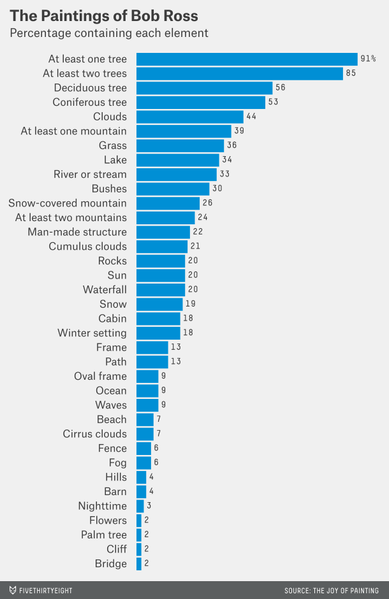Sandbox: Difference between revisions
Jump to navigation
Jump to search
| (39 intermediate revisions by the same user not shown) | |||
| Line 1: | Line 1: | ||
==Numbers with painting== | |||
Bob Griffin sent a link to: | |||
[http://fivethirtyeight.com/features/a-statistical-analysis-of-the-work-of-bob-ross/ A statistical analysis of the work of Bob Ross]<br> | |||
by Walt Hickey, FiveThirtyEightLife blog, 14 April 2014 | |||
Ross was painter on the PBS series, “The Joy of Painting." He starred in 403 episodes that originally aired from 1983-1994, and are still showing in reruns. | |||
The blog post give the following graphic showing how often various elements appeared in Ross's pairings. | |||
: [[File:Hickey-ross.png | 389px]] | |||
To be continued... | |||
Revision as of 18:03, 22 April 2014
Numbers with painting
Bob Griffin sent a link to:
A statistical analysis of the work of Bob Ross
by Walt Hickey, FiveThirtyEightLife blog, 14 April 2014
Ross was painter on the PBS series, “The Joy of Painting." He starred in 403 episodes that originally aired from 1983-1994, and are still showing in reruns. The blog post give the following graphic showing how often various elements appeared in Ross's pairings.
To be continued...
